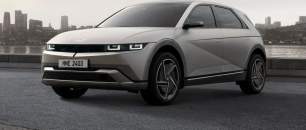All reviews
Browse over 9,000 car reviewsFamily
Family focused reviews and advice for everything family car relatedCompare cars
We make it easy to compare design, practicality, value and moreAdventure
Off-road for beginners and the experienced, plus camper trailers, caravans and motorhomesOwner reviews
Your thoughts could drive you to more than just your next destinationTradies
Utes, commercial vehicles and tow testsBest cars by category
Latest news
What's happening in the automotive worldConcept cars
The most interesting hints of what's to comePodcast
Get to know the personalities behind the team every weekRecalls
What's been recalled and why. Are you affected?Motor shows
The stars of the latest big eventsTechnology
The latest and future car tech from around the worldAll advice
We're here to help you with any car issuesFamily
Looking for tips on how to carry or travel with your family?Adventure
How To, off-road tips and adventure travel destinationsTradies
Not just utes. Detailed advice for you - the tradie - on what car is right for you and your jobAsk the guide
Looking for an answer? Our automotive experts are here to helpIs it illegal?
If you're wondering, we've probably got the answerTowing capacity
Unsure of your car's maximum towing capacity? We've listed all relevant models here.Tyre pressure
Wondering how much air to put in your tyres? Our database has the answerSafety
Everything you need to know to keep you and your family as safe as possibleFinance
Helpful advice before you finance your next carInsurance
Tips for getting the right insurance and how to make a claimCar dimensions
Everything you need to know when sizing up your new carGuides







